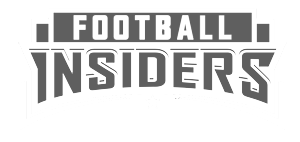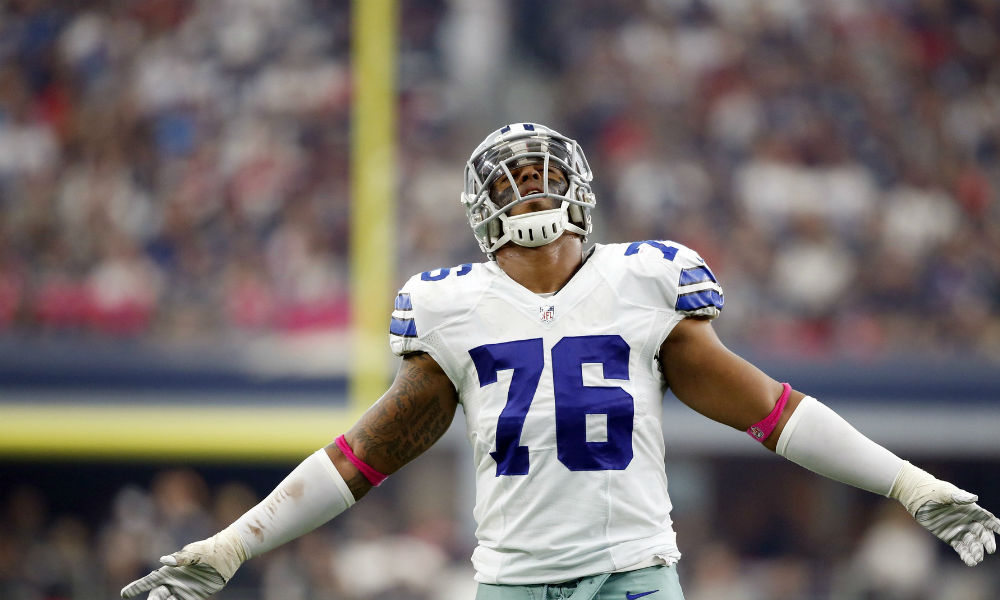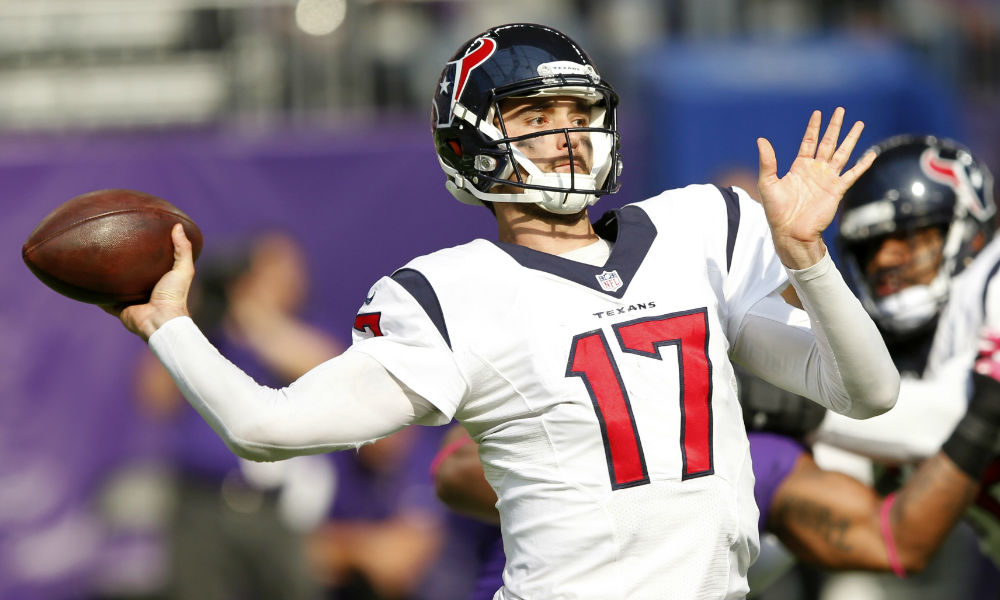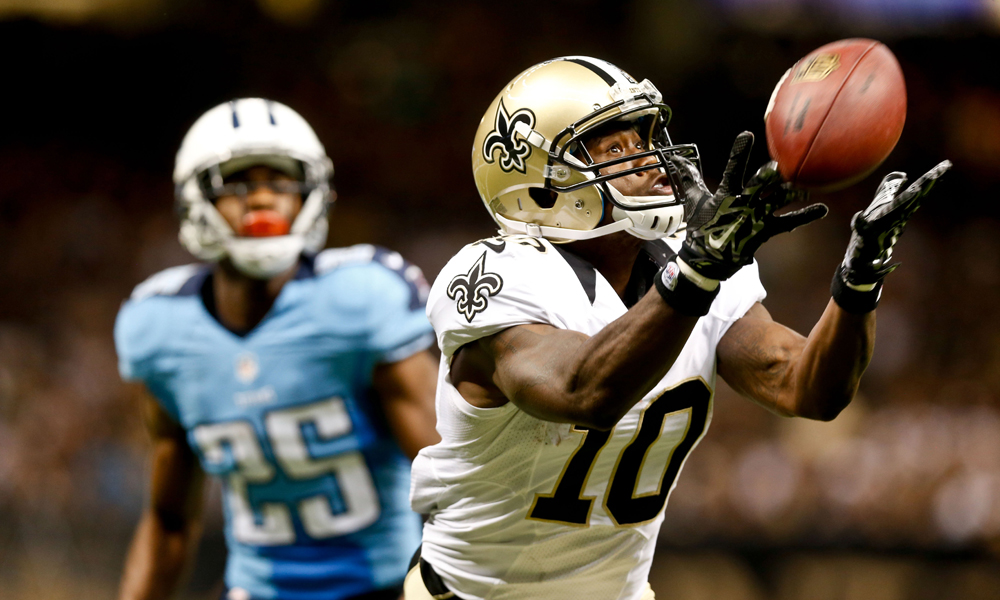News
Competition committee considers expanded replay
INDIANAPOLIS — During a 2014 season, and especially a postseason, that included major controversial calls that impacted playoff results, NFL vice president of officiating Dean Blandino was backpedaling faster than an All-Pro cornerback when pressed for explanations.
“That will be discussed in the offseason,” he said repeatedly,
Although most attention is on the NFL combine here this week, those discussions Blandino mentioned started here Monday in a mega meeting involving the competition committee and the coaches’ subcommittee, which advises if and how rule changes might be made.
The Sports Xchange learned from sources heading to the room Monday that television may be the major tool in addressing many concerns, with broader use of challenges and video replay decisions by Blandino himself watching big screens in New York.
After it hears input from the coaches’ subcommittee, among others here this week, the competition committee will come up with suggestions for possible rules changes to be presented at the NFL league meeting next month in Phoenix.
Here are three key issues expected to be addressed by expanded use of replay and some of the main discussion points:
–Decisions on catch/no-catch determinations, formerly known as the Calvin Johnson rule, topical again after last season’s playoffs when a seemingly great catch by Dallas Cowboys wide receiver Dez Bryant against the Green Bay Packers was nullified by referee Gene Steratore. Interestingly, Blandino was part of the final decision via communication from New York.
Discussion points: The committee is considering a rule change to re-define and simplify elements that determine catch/no-catch calls so they are not micro-analyzed to the point where an apparently obvious catch is disallowed. In Bryant’s case, the technicality was determining whether Bryant was in control of the ball and “making a football move” when he lunged toward the end zone and the ball touched the ground. It is debatable whether slow motion replay exaggerated the eventual call against Bryant.
–Decisions on perhaps the most subjective call in football, pass interference, which was an issue in the Detroit-Dallas postseason game. A flag was initially thrown on Cowboys linebacker Anthony Hitchens, for his actions against tight end Brandon Pettigrew on a crucial third-and-1 play in the fourth quarter. Despite an obvious foul of some sort, the flag was picked up after a brief discussion among officials. Detroit’s drive, and postseason hopes, died after that non-call.
Discussion points: At least two considerations are in play here. First, the use of all-star officiating crews means these officials are not familiar with each other and their communication is not smooth or can be out of sync, as was the case in Dallas. Previously, there was talk about abandoning all-star crews in these important games, but that reward system is protected in a contract with officials that runs through the 2015 season. Second, Blandino admits that broadening the kinds of plays and calls that can be reviewed would have, at the minimum, resulted in a holding penalty against Dallas and a first down for Detroit.
–Decisions on targeting or major penalties called because the official believed the play involved an illegal hit on a defenseless player or involved a helmet as a weapon or a target.
Discussion points: In the interest of safety, the penalty seems to be called too liberally. A notable instance occurred when San Francisco’s Nick Moody was incorrectly flagged for a hit on Seattle quarterback Russell Wilson — a penalty that may have helped cost the 49ers a victory that might have invigorated their playoff hopes. Several coaches have requested the ability to challenge such calls and Blandino admits “at full speed, it’s real tough to make these calls. But, when you’re able to slow it down, you’re able to discern between contact to the head and contact to the shoulder.”
Also on the docket:
–Ineligible players with eligible jersey numbers. New England Patriots coach Bill Belichick used an inventive offensive ploy of inserting a player wearing an eligible number but aligned technically as an ineligible participant. The express intent was to confuse the defense because it was difficult to discern which player wearing an eligible number was really ineligible.
Discussion points: One way to address this is to mandate enforcement of using the rule-designated numbers for ineligible players. It is unclear whether such a proper numbers rule existed or was simply believed to be in place. Regardless, in the 1970s, Oakland Raiders coach John Madden always had a spare jersey with an ineligible number in case he needed Dave Casper as an emergency, ineligible offensive lineman. Casper played tackle at Notre Dame, but became a Hall of Fame tight end in the NFL wearing No. 87.
–Points after touchdowns. In an ongoing effort to address the unexciting formality of PAT kicks that are almost automatic, the league is talking about an experiment, at least, that would involve narrowing the uprights.
Discussion points: There does not seem to be consensus that the PAT needs to be addressed, despite experiments of moving it back and talks of narrowing the uprights. Kickers obviously are against such changes and, despite the NFL’s desire to somehow enhance the drama in a PAT, most coaches believe it ain’t broke, so don’t fix it.
–Defensive special team players soaring over the line on field-goal attempts. Seattle’s Kam Chancellor, unassisted, managed to hurdle Carolina’s line a couple of times and land on his feet on the other side in an attempt to block a kick.
Discussion points: Although Chancellor managed to soar through the air because of his exceptional athleticism, such a tactic increases the potential for injury. At a time when the NFL is working to increase safety, the simple approach would be to make such a move illegal with or without assistance. “It’s something that we’ll look at,” Blandino said the week before the Super Bowl. “It is legal because he jumped from off the line of scrimmage, he didn’t land on a player, and he certainly didn’t use the body of a teammate or opponent to gain leverage to get additional height. But there’s a safety element to it.”
Frank Cooney, founder and publisher of The Sports Xchange and NFLDraftScout.com, has covered the NFL and the draft since the 1960s and is a selector for the Pro Football Hall of Fame.
News
Broncos holding their breath on Derek Wolfe
Source: Mike Florio of ProFootballTalk
Powered by WPeMatico
News
Buccaneers admit mistake, boot Aguayo
Source: Mike Florio of ProFootballTalk
Powered by WPeMatico
News
Did Bucs put too much pressure on Aguayo?
Source: Mike Florio of ProFootballTalk
Powered by WPeMatico




